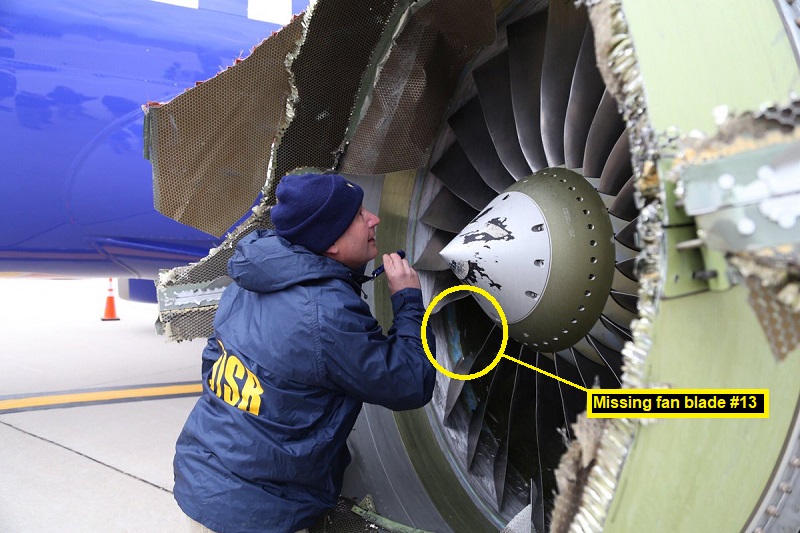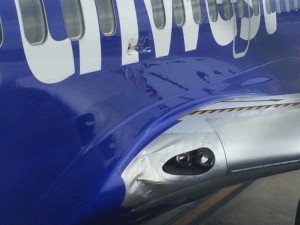- Joined
- Jun 2, 2002
- Messages
- 4,208
Originally Posted By: nthach
In the case of a fan blade that is nicked or cracked, is SOP to have it sent back to a workshop to get it repaired and re-checked for damage via NDT? Or is it scrapped for a new OEM blade? Is there a different procedure for a composite blade like what the GE90/GENX/LEAP uses?
Titanium blades can have minor nicks blended on-wing. The plane would be pulled from service and have the blend accomplished during the down time. Blending of any part would require the nick be blended, acid etched and then FPI'd. this procedure can take several hours.
If blade replacement were necessary then they are always replaced in weight-matched sets. The bad blade is removed and the transverse blade is also removed. Replacement blades are kept in sets for this use so it's faster to replace a blade than to blend one.
As for the composite blades, they all have a metal strip on their leading edge to prevent fiber damage. The blades are made from carbon fiber tape, carbon fiber fabric and a fiberglass fabric ply placed periodically within the layup. The outer ply of carbon tape is also surrounded by fiberglass fabric. This is done to increase impact resistance. While they are very light (GE90-115 blade weighs about 48lbs) and strong they are susceptible to impact damage from ingested FOD. Any fiber damage will necessitate replacement.
In the case of a fan blade that is nicked or cracked, is SOP to have it sent back to a workshop to get it repaired and re-checked for damage via NDT? Or is it scrapped for a new OEM blade? Is there a different procedure for a composite blade like what the GE90/GENX/LEAP uses?
Titanium blades can have minor nicks blended on-wing. The plane would be pulled from service and have the blend accomplished during the down time. Blending of any part would require the nick be blended, acid etched and then FPI'd. this procedure can take several hours.
If blade replacement were necessary then they are always replaced in weight-matched sets. The bad blade is removed and the transverse blade is also removed. Replacement blades are kept in sets for this use so it's faster to replace a blade than to blend one.
As for the composite blades, they all have a metal strip on their leading edge to prevent fiber damage. The blades are made from carbon fiber tape, carbon fiber fabric and a fiberglass fabric ply placed periodically within the layup. The outer ply of carbon tape is also surrounded by fiberglass fabric. This is done to increase impact resistance. While they are very light (GE90-115 blade weighs about 48lbs) and strong they are susceptible to impact damage from ingested FOD. Any fiber damage will necessitate replacement.




